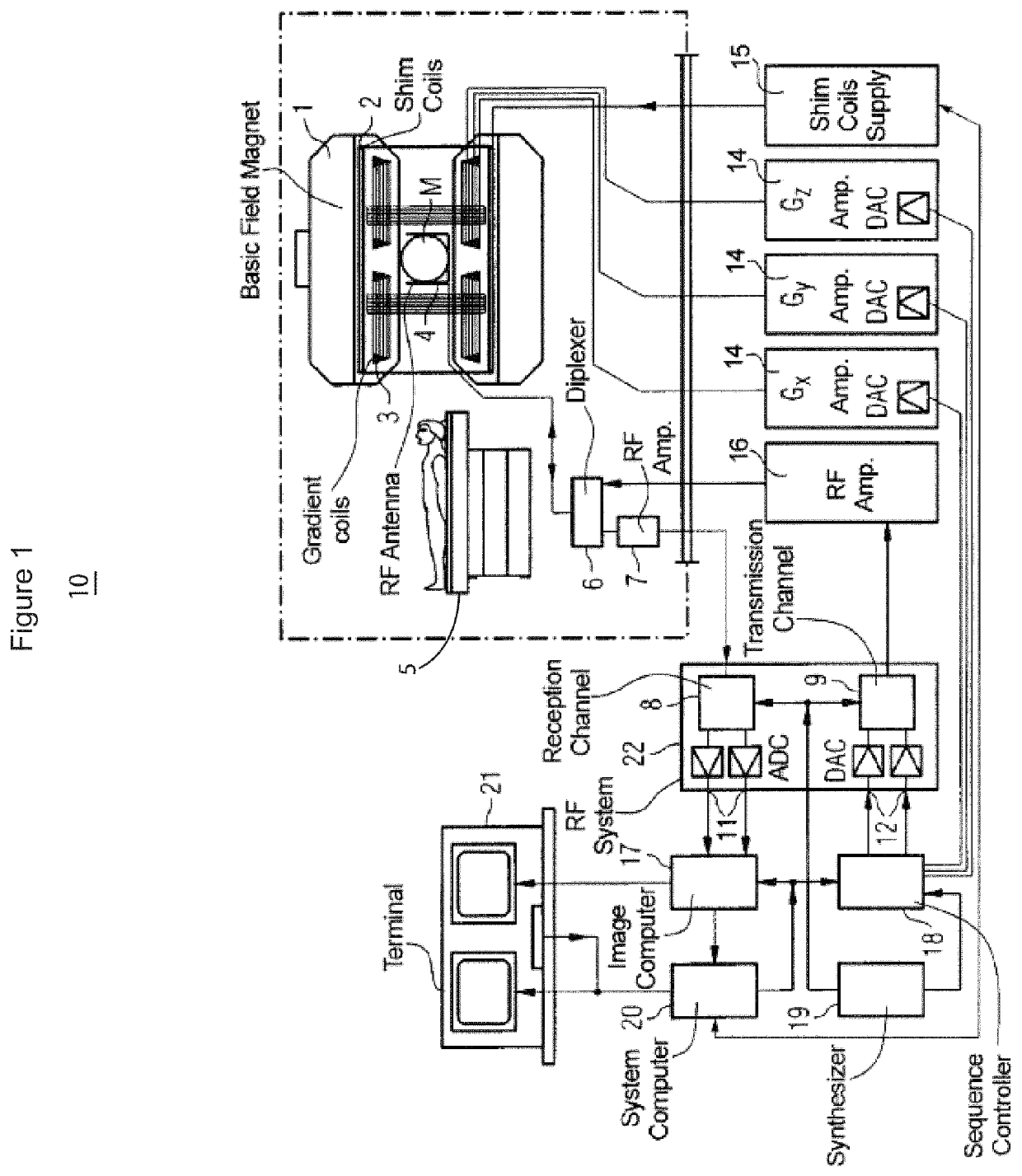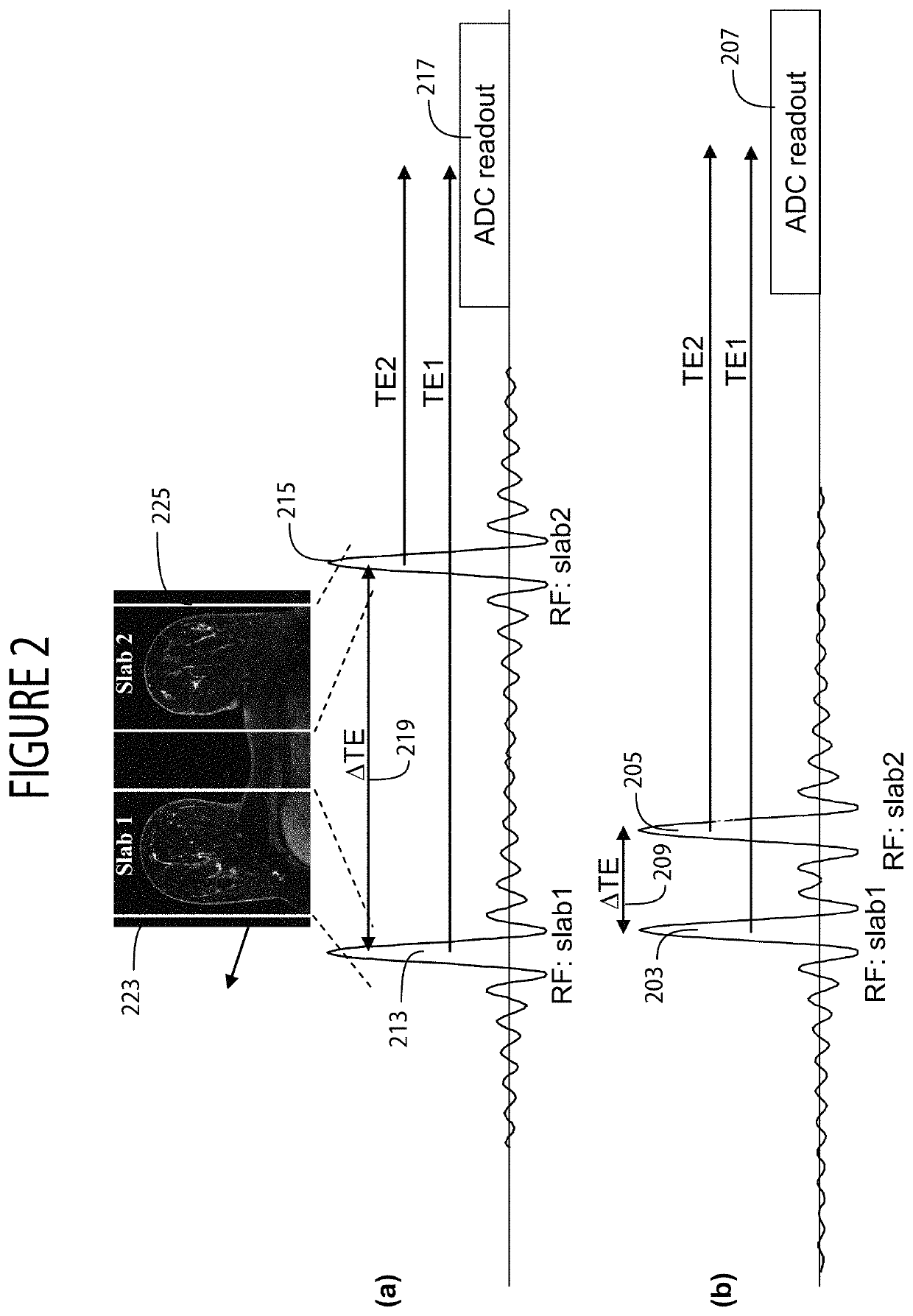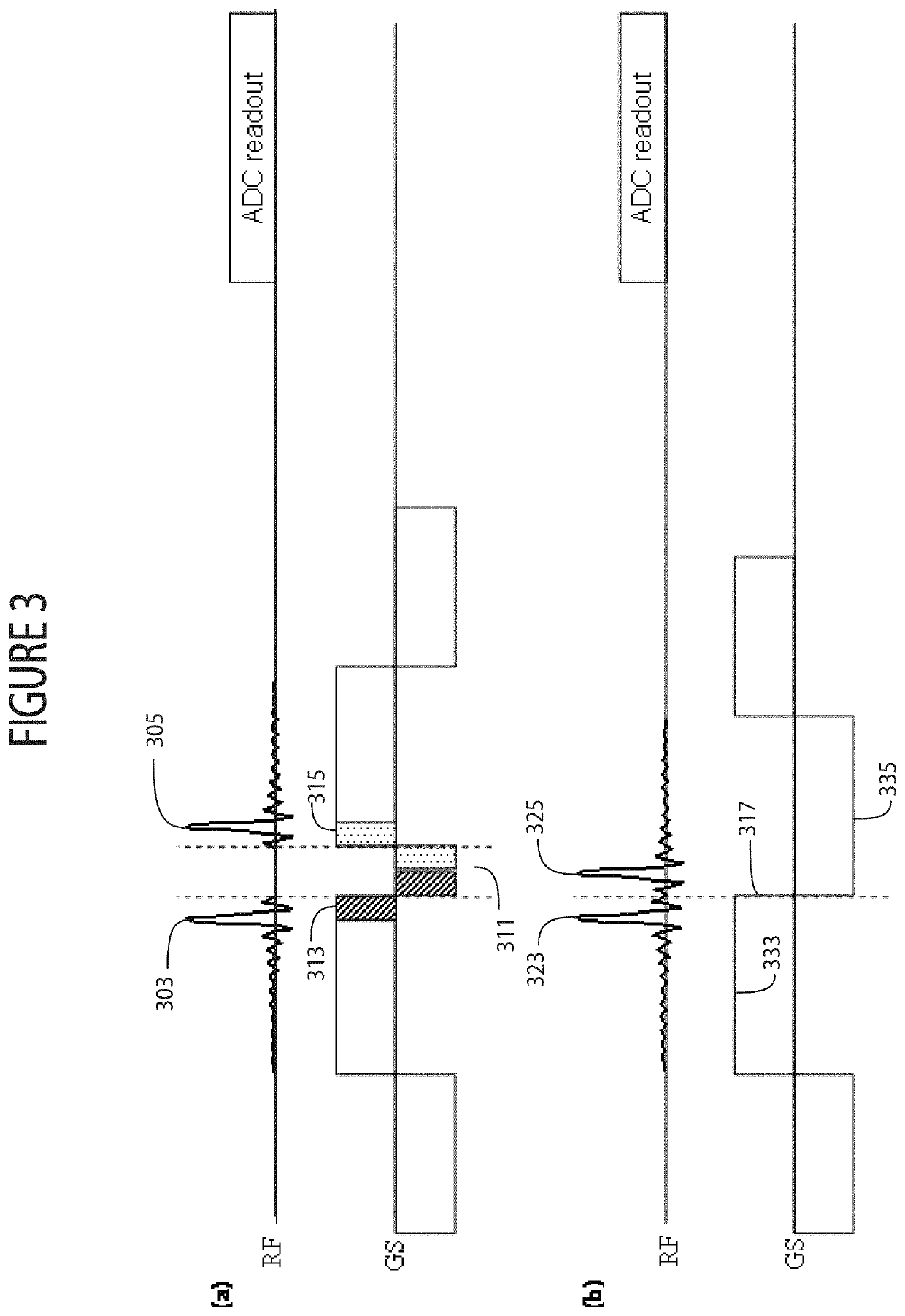System for simultaneous dual-slab acquisition of MR images with asymmetric and time-reversed asymmetric, concatenated pulses
a dual-slab and mr image technology, applied in the field of simultaneous dual-slab acquisition of mr images with asymmetric and time-reversed asymmetric, concatenated pulses, can solve the problems of individual slabs and significant difference in image contrast between the two slices/slabs, and achieve the effect of reducing the difference in te between the two slabs, maximizing and reducing the difference in
- Summary
- Abstract
- Description
- Claims
- Application Information
AI Technical Summary
Benefits of technology
Problems solved by technology
Method used
Image
Examples
Embodiment Construction
[0011]A system in one embodiment, uses two concatenated separate RF pulses for wideband MRI advantageously reducing difference in echo time (TE) and image luminance contrast in dual slab imaging of left and right breasts, for example. FIG. 2(b) shows two concatenated separate RF pulses 203, 205 with corresponding echo time (TE1 and TE2) having reduced difference ΔTE 209 and used for acquisition of two slabs (e.g. of left and right breasts). The sequence of RF pulses 203, 205 advantageously comprises an asymmetric pulse 203 concatenated with a reversed asymmetric pulse 205 having respective echo times TE1, TE2 between the start of RF pulses 203, 205 to a maximum in the received echo signal during readout 207. In contrast, FIG. 2(a) shows a known two symmetric RF pulse sequence including RF pulses 213, 215 with corresponding echo time (TE1 and TE2) between the start of RF pulses 213, 215 to a maximum in the received echo signal during readout 217 and having difference ΔTE 219 substant...
PUM
 Login to View More
Login to View More Abstract
Description
Claims
Application Information
 Login to View More
Login to View More - R&D
- Intellectual Property
- Life Sciences
- Materials
- Tech Scout
- Unparalleled Data Quality
- Higher Quality Content
- 60% Fewer Hallucinations
Browse by: Latest US Patents, China's latest patents, Technical Efficacy Thesaurus, Application Domain, Technology Topic, Popular Technical Reports.
© 2025 PatSnap. All rights reserved.Legal|Privacy policy|Modern Slavery Act Transparency Statement|Sitemap|About US| Contact US: help@patsnap.com



